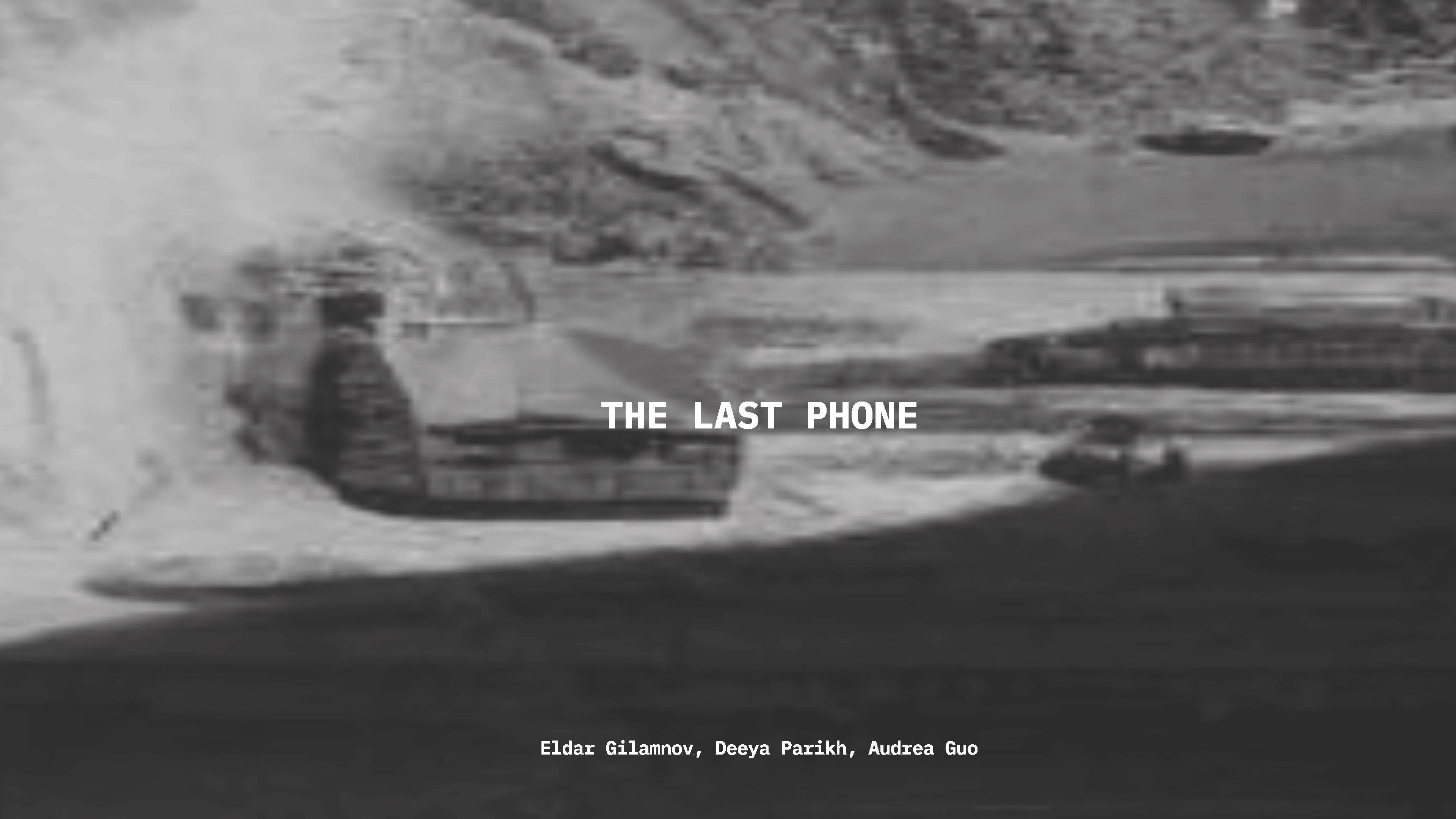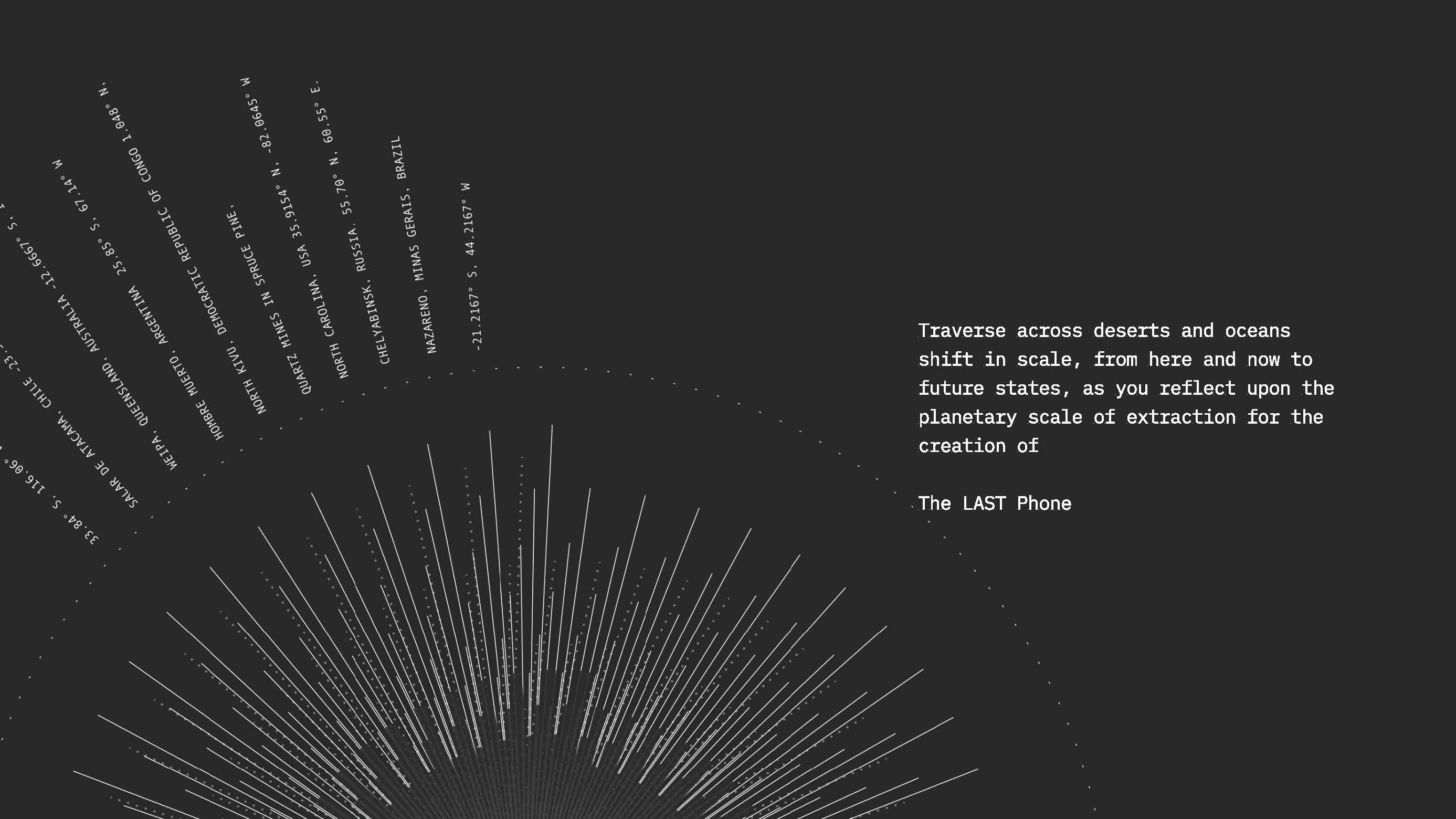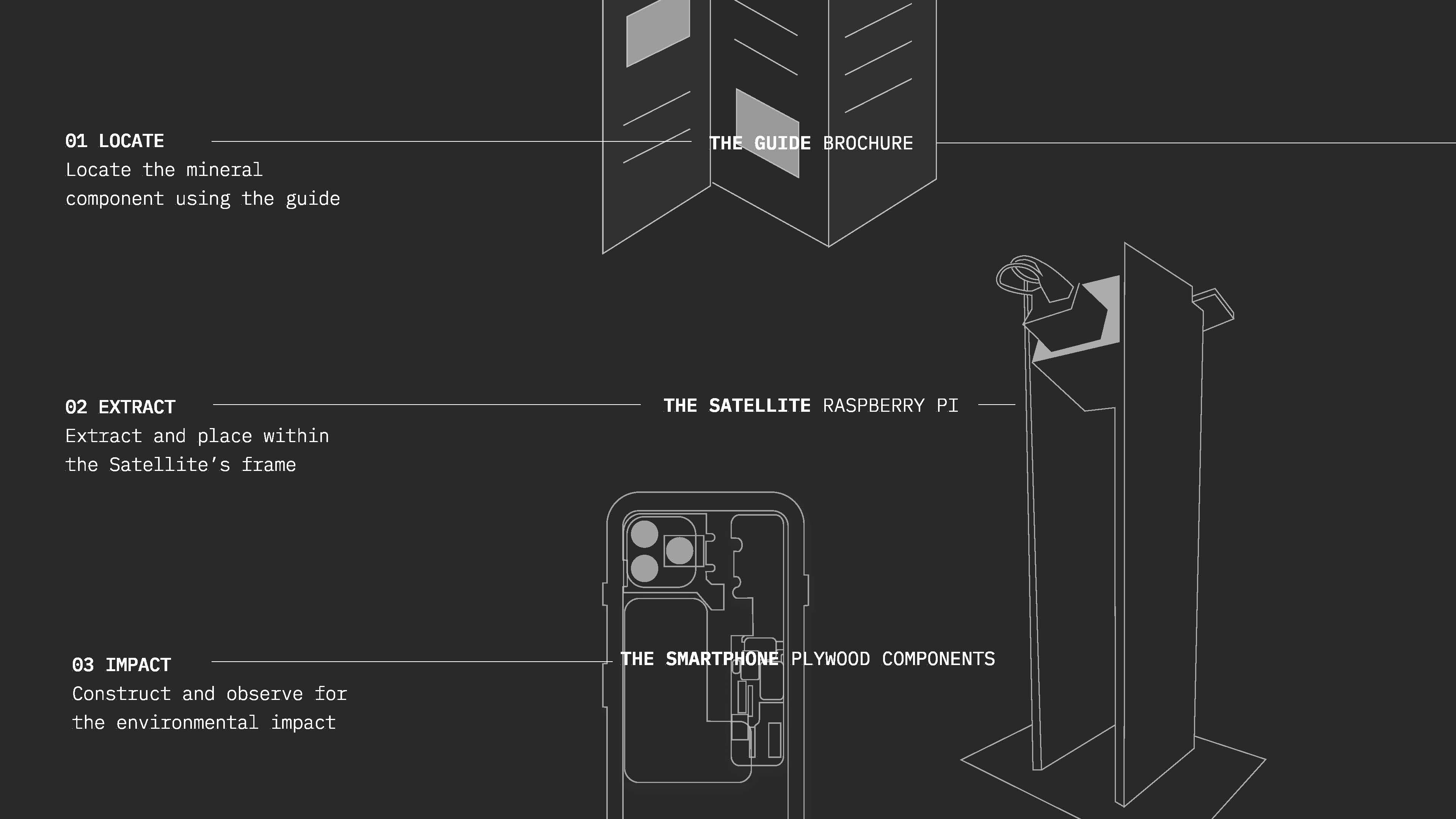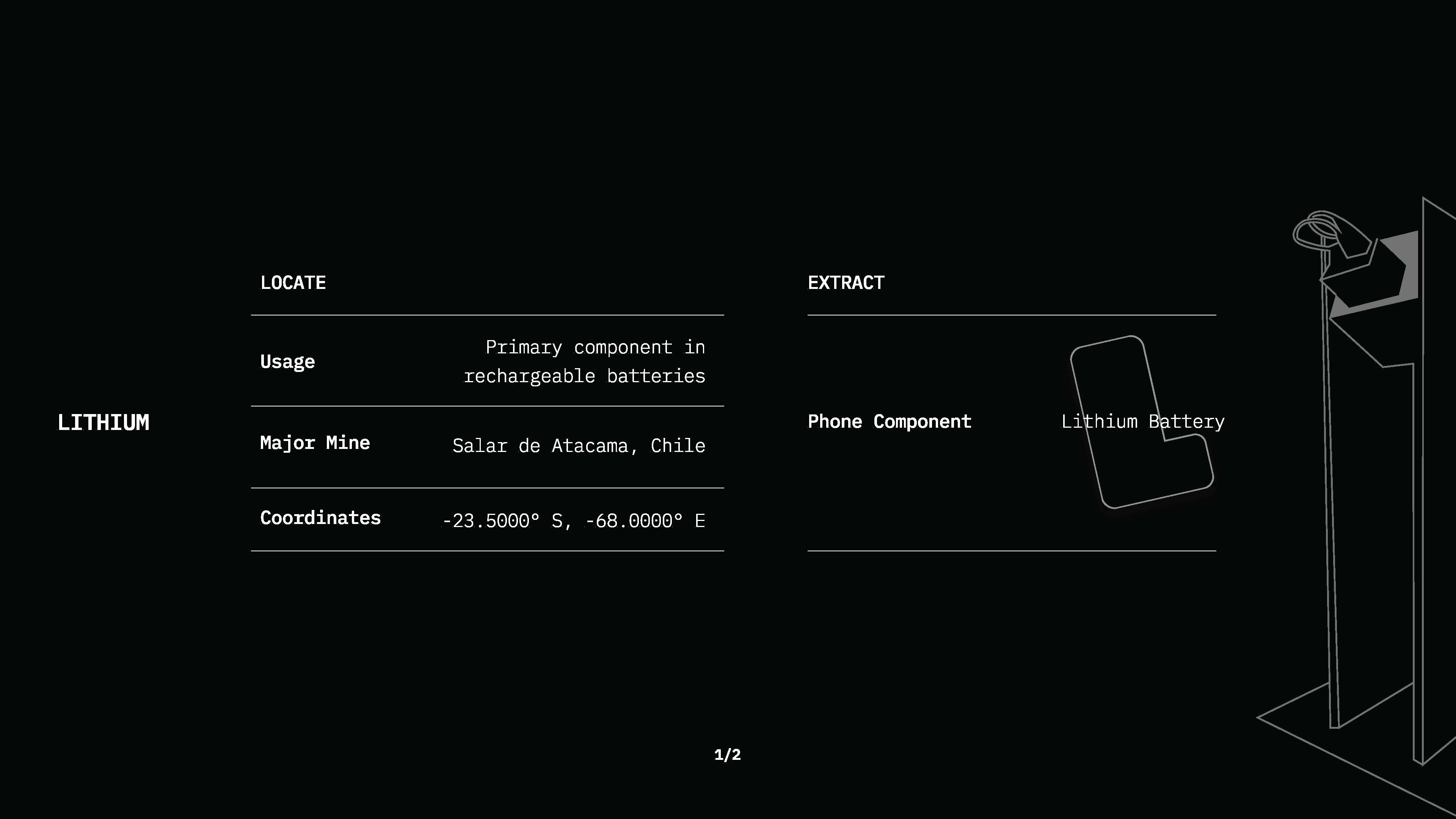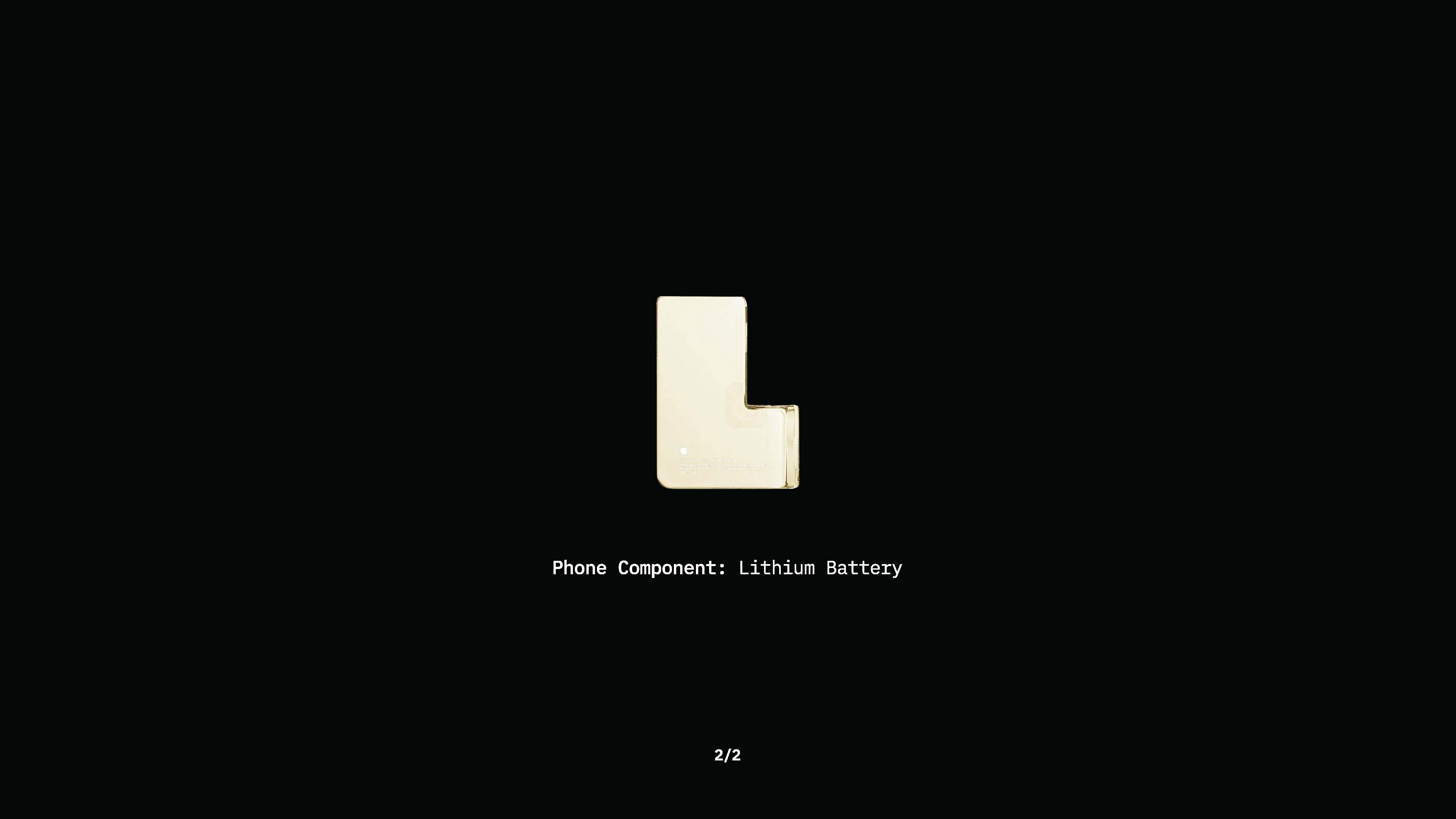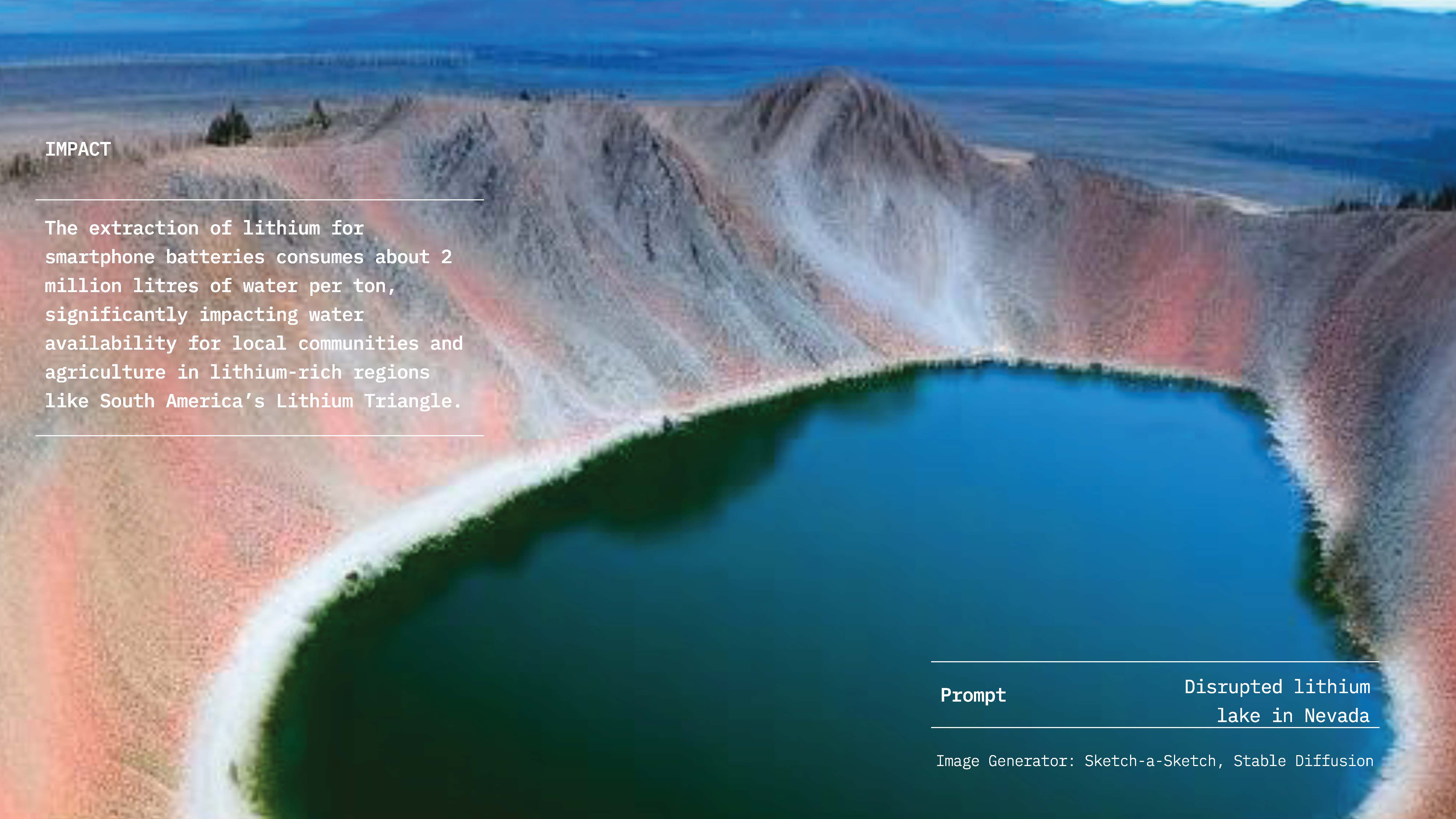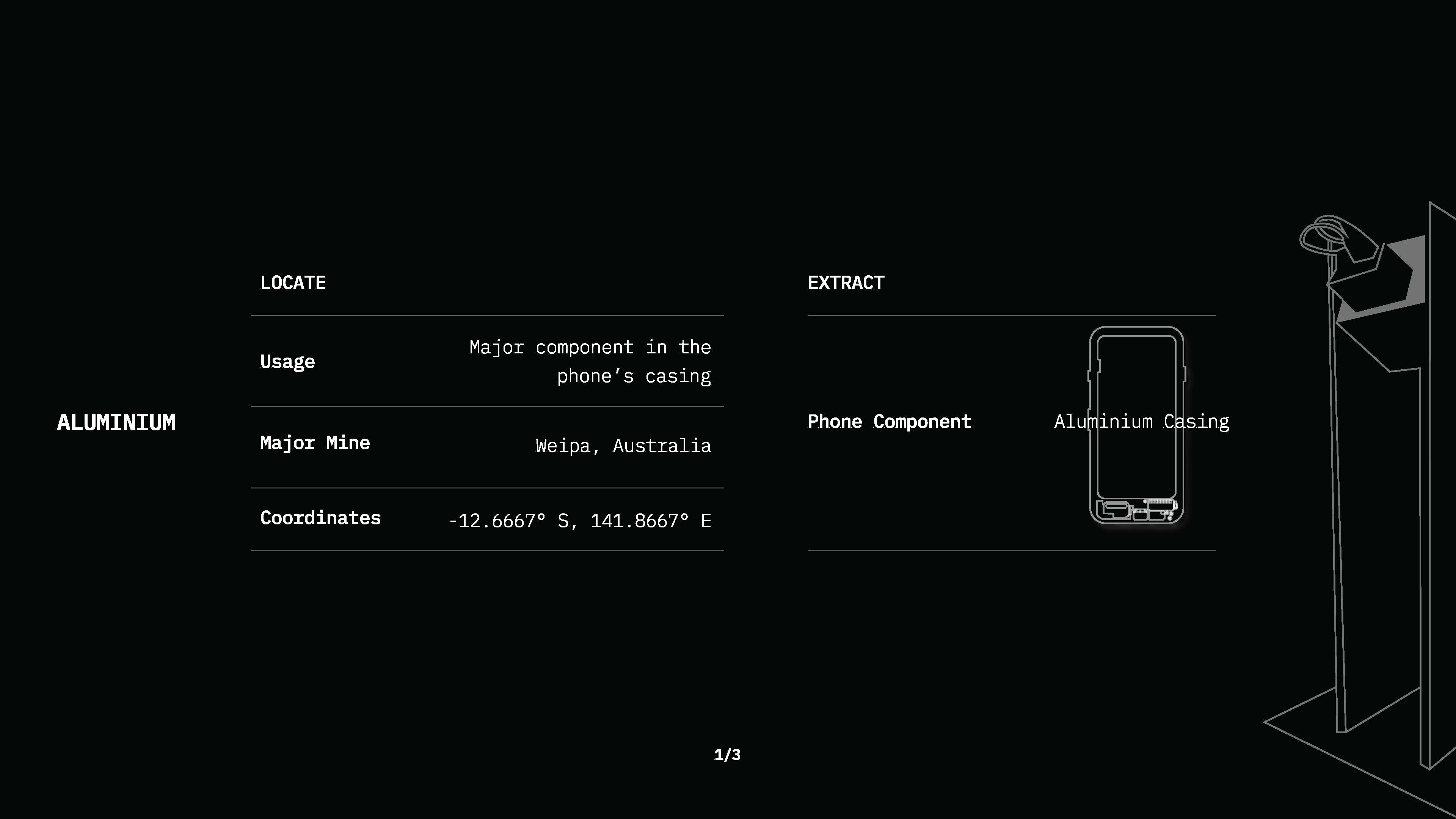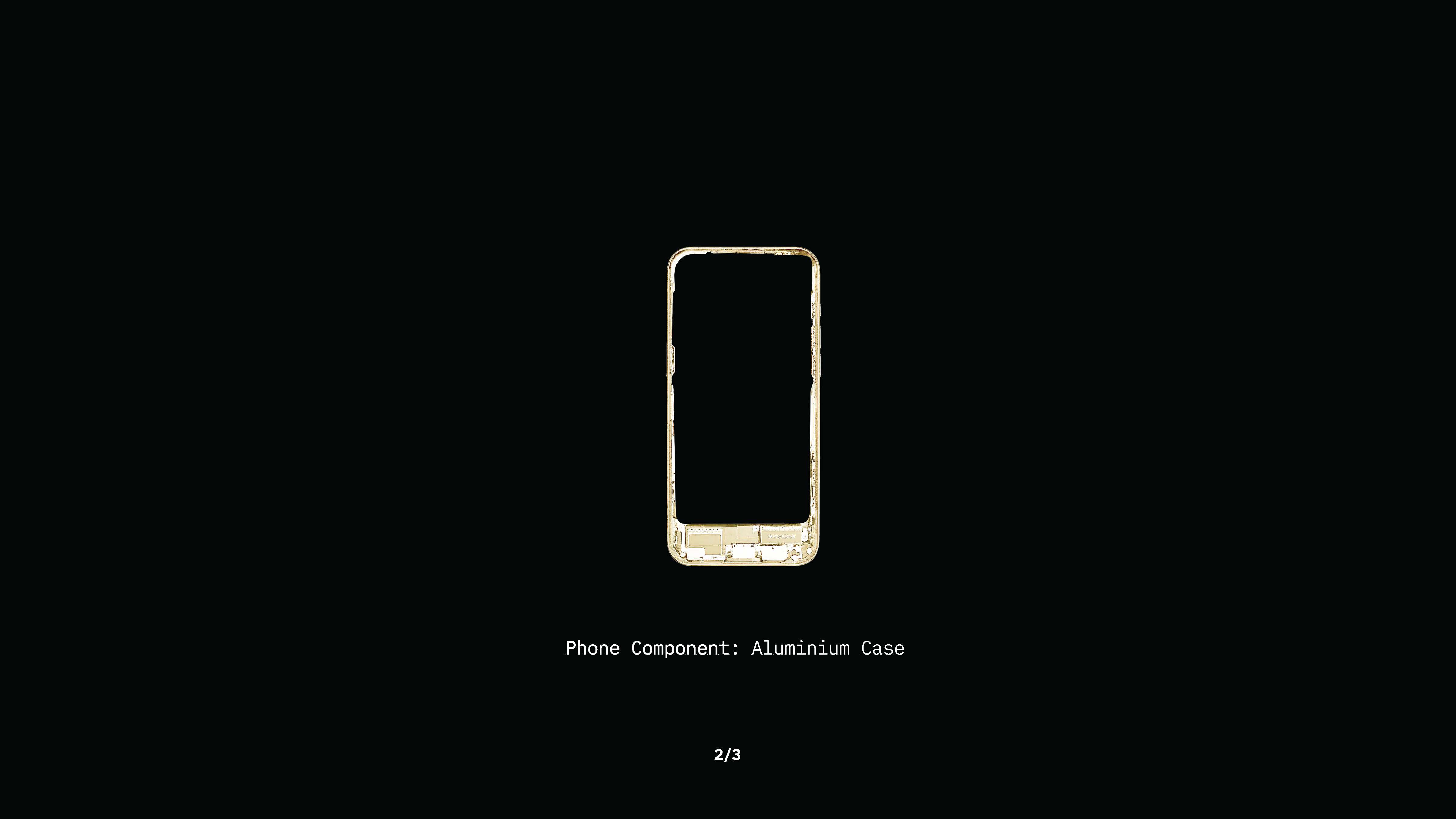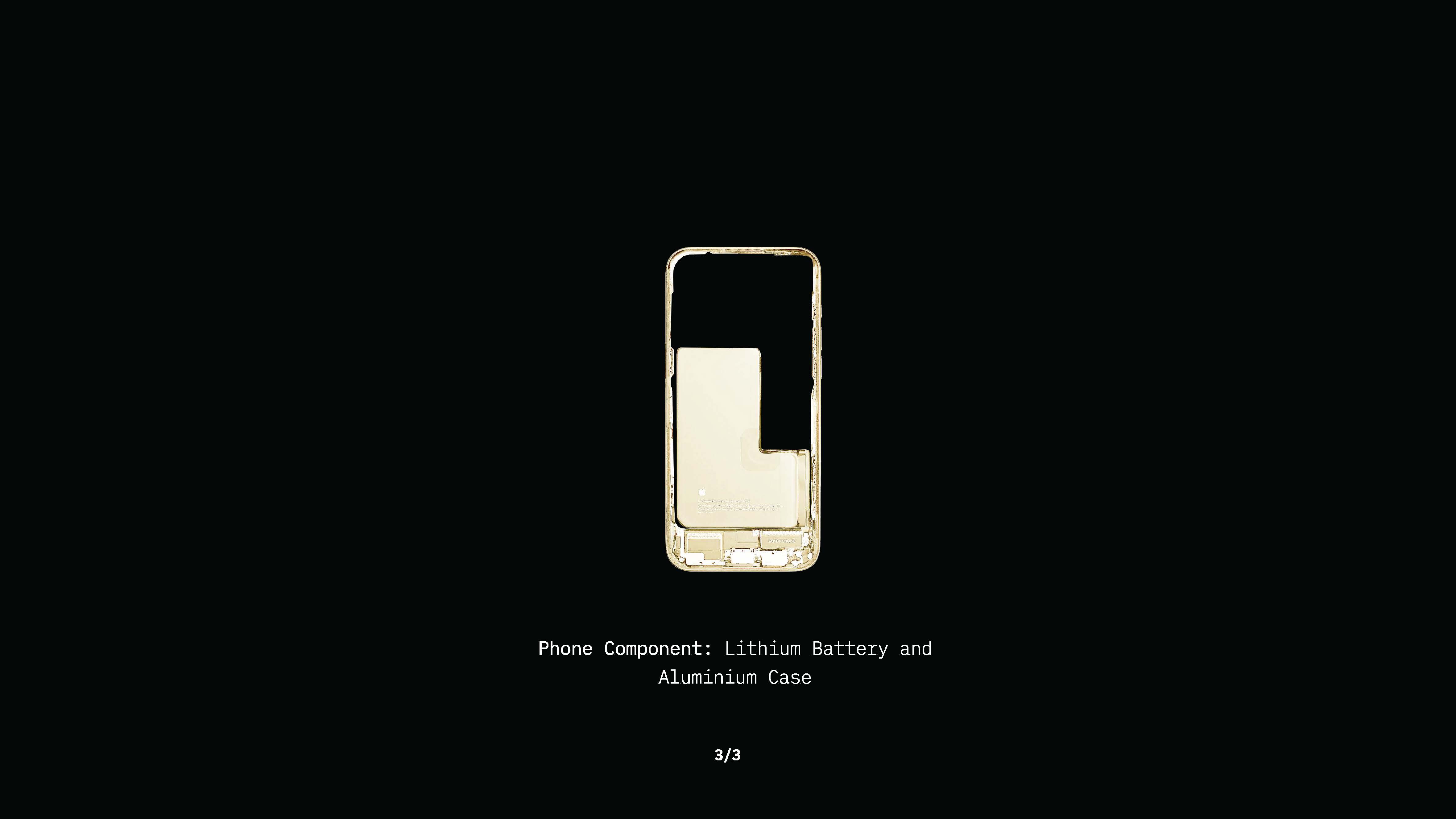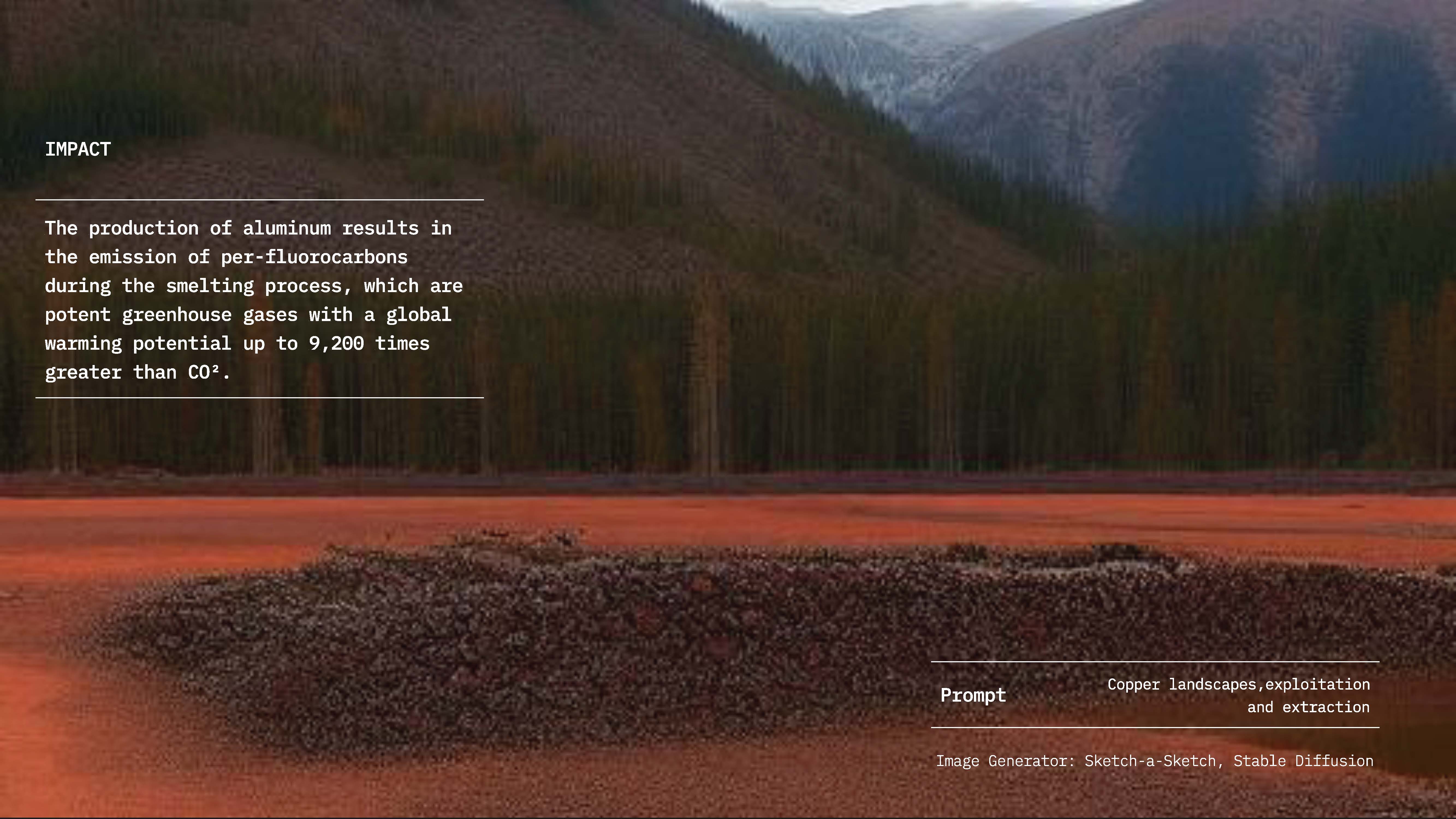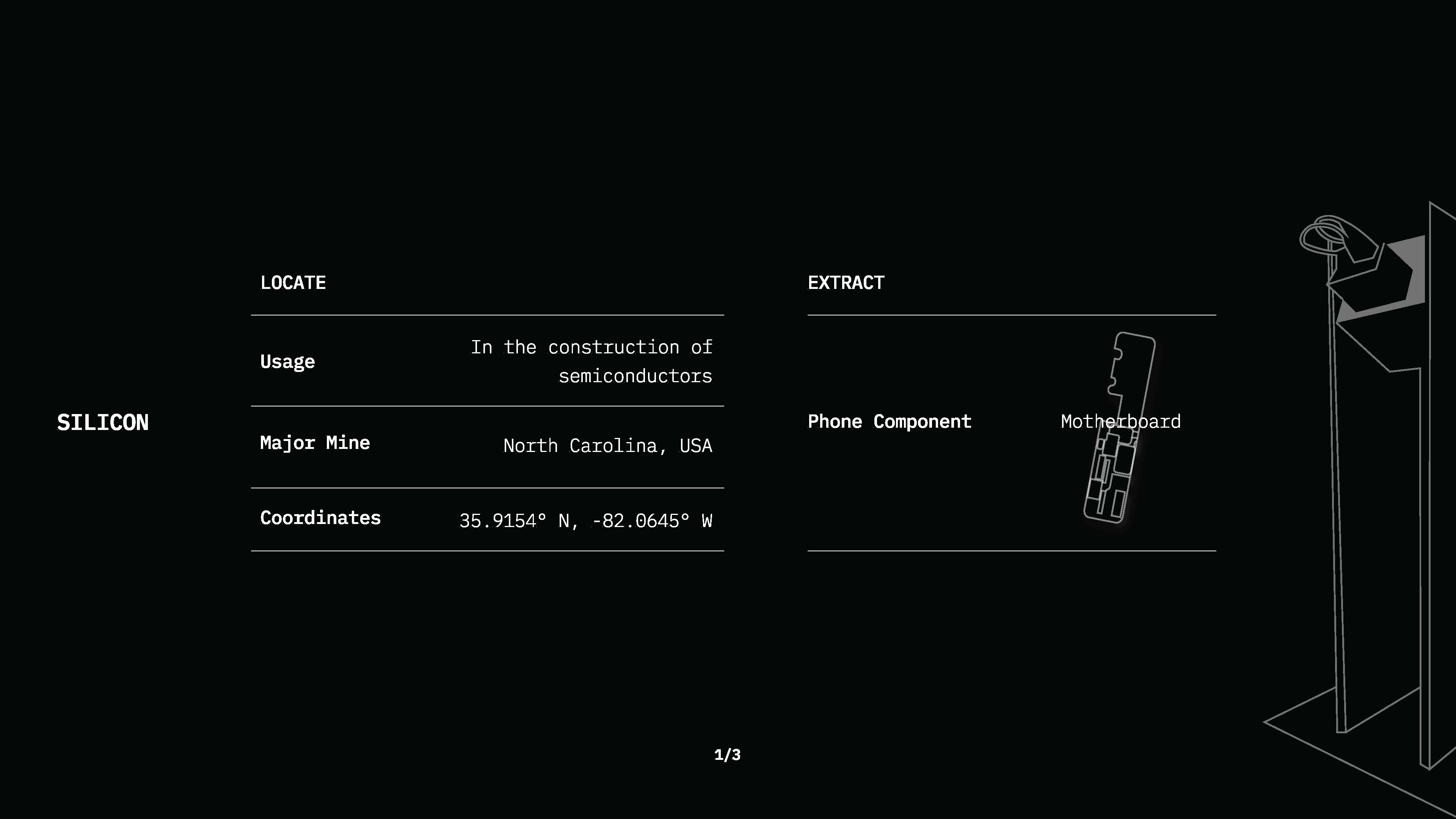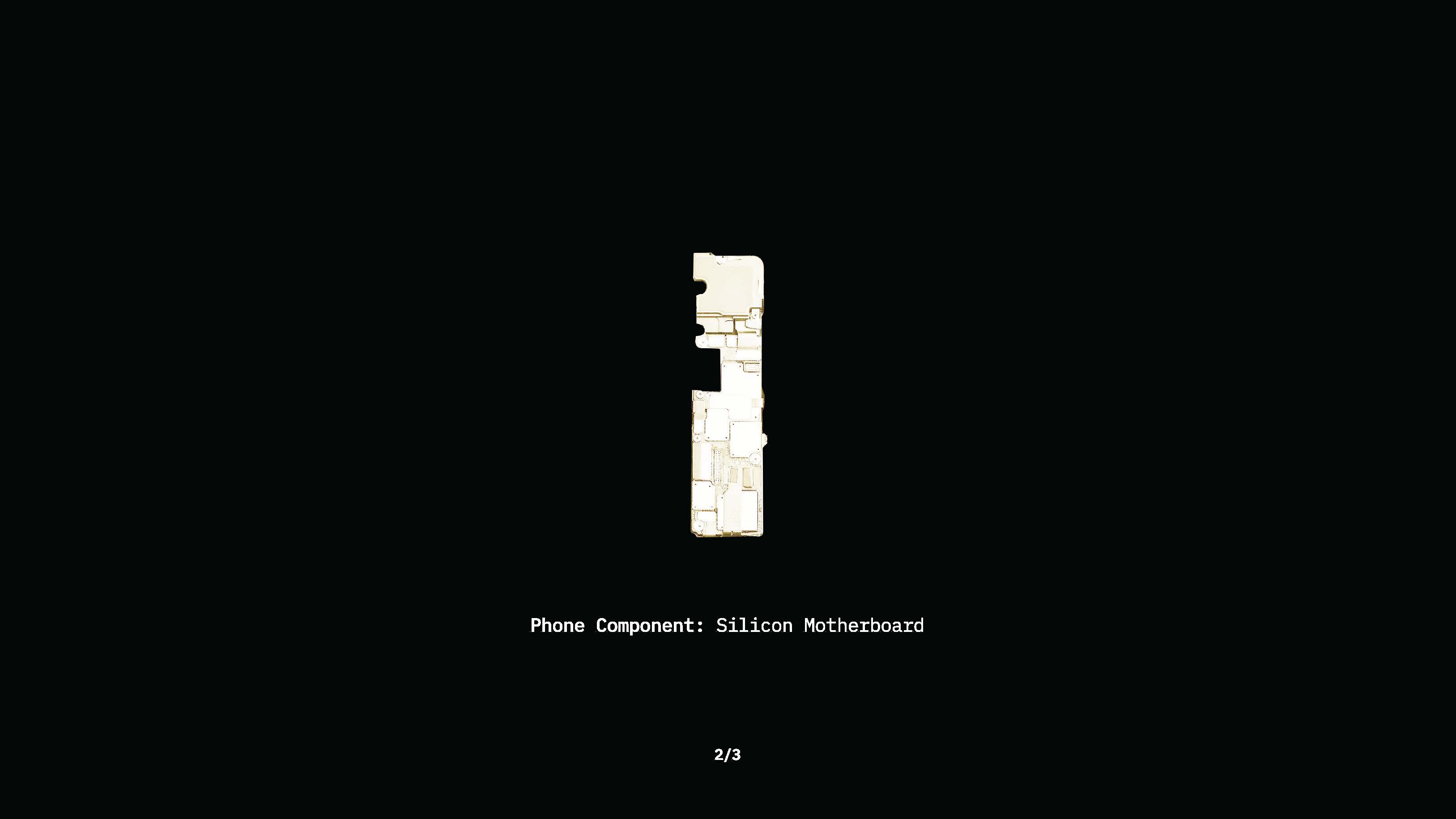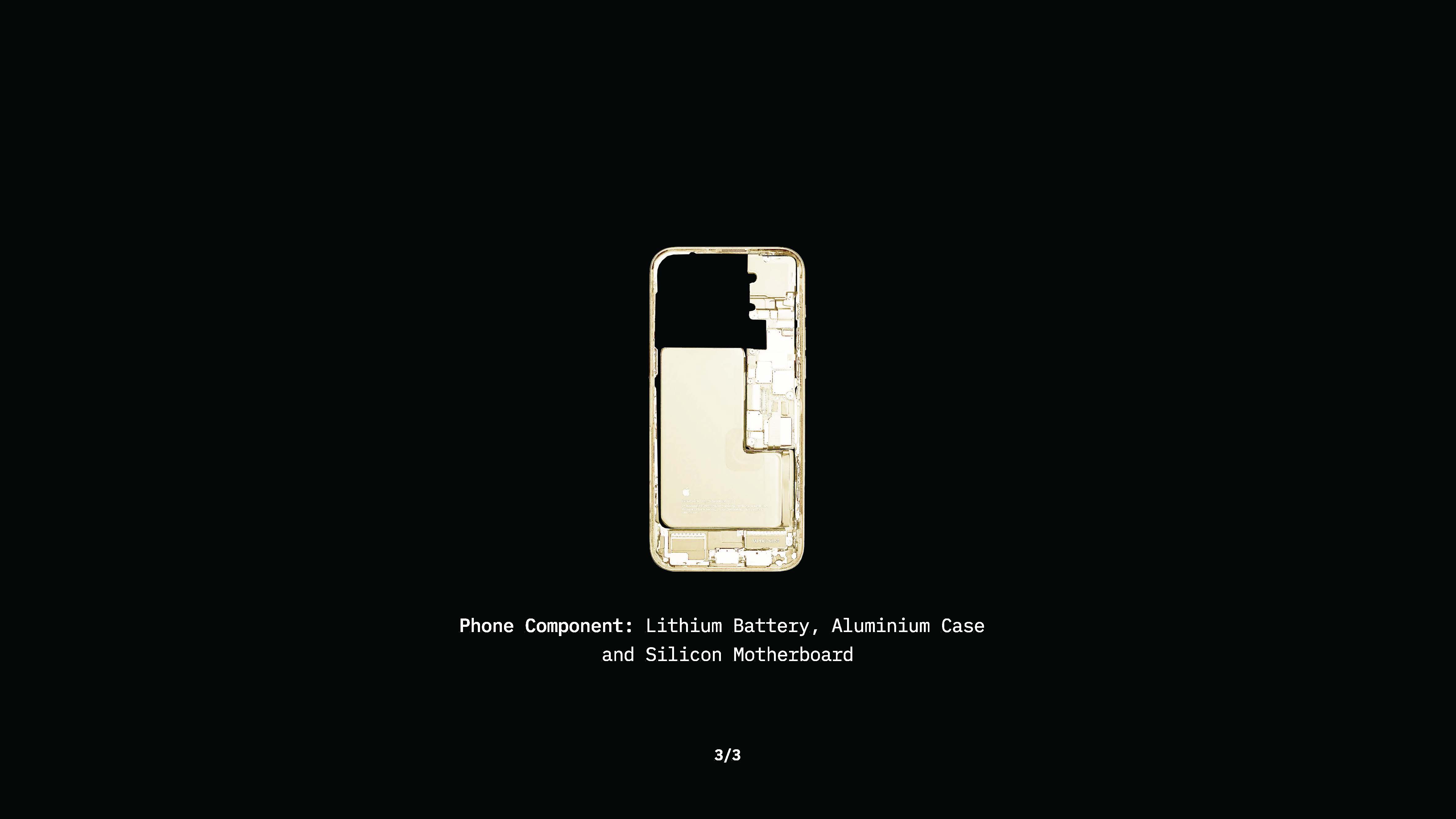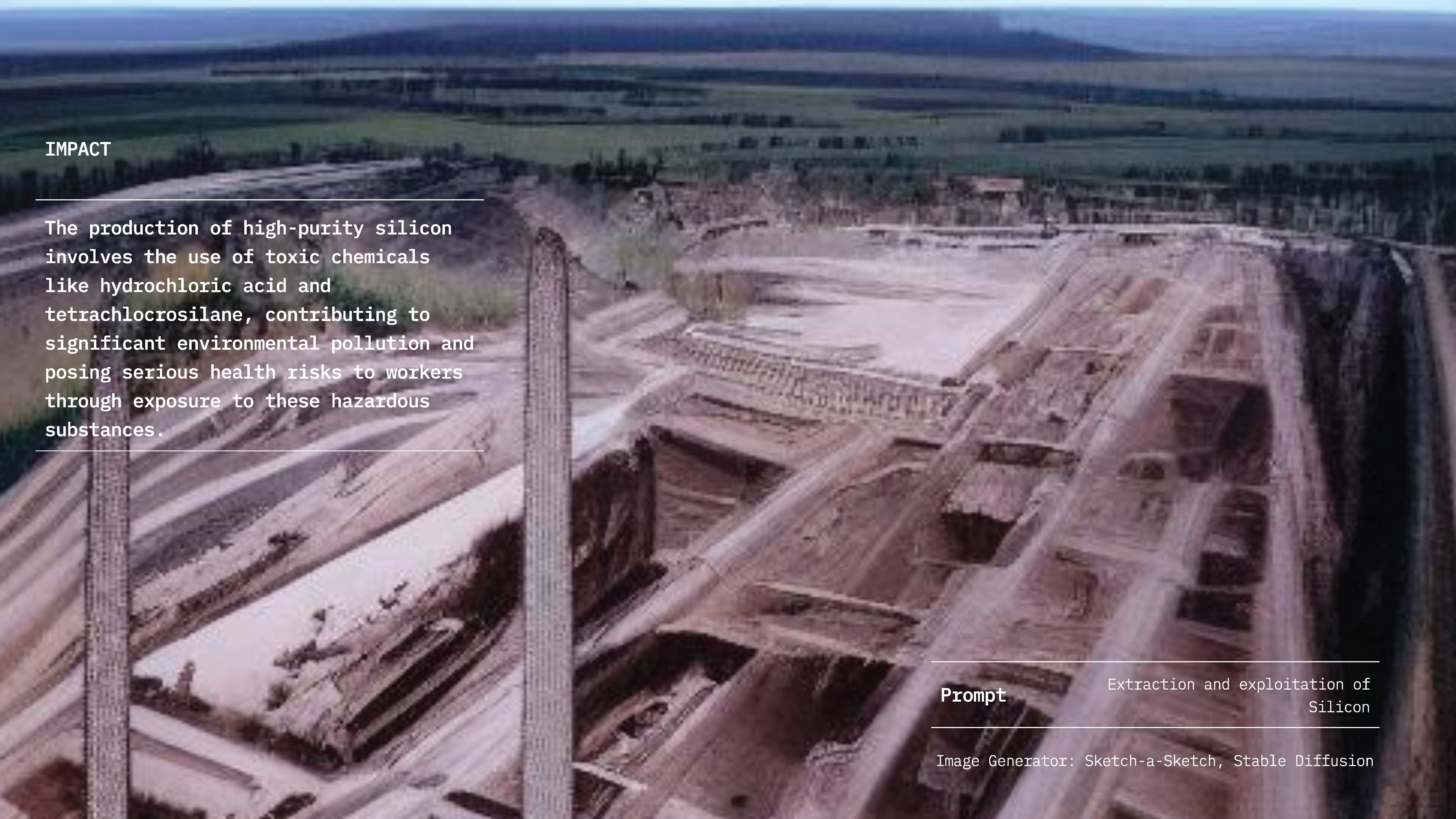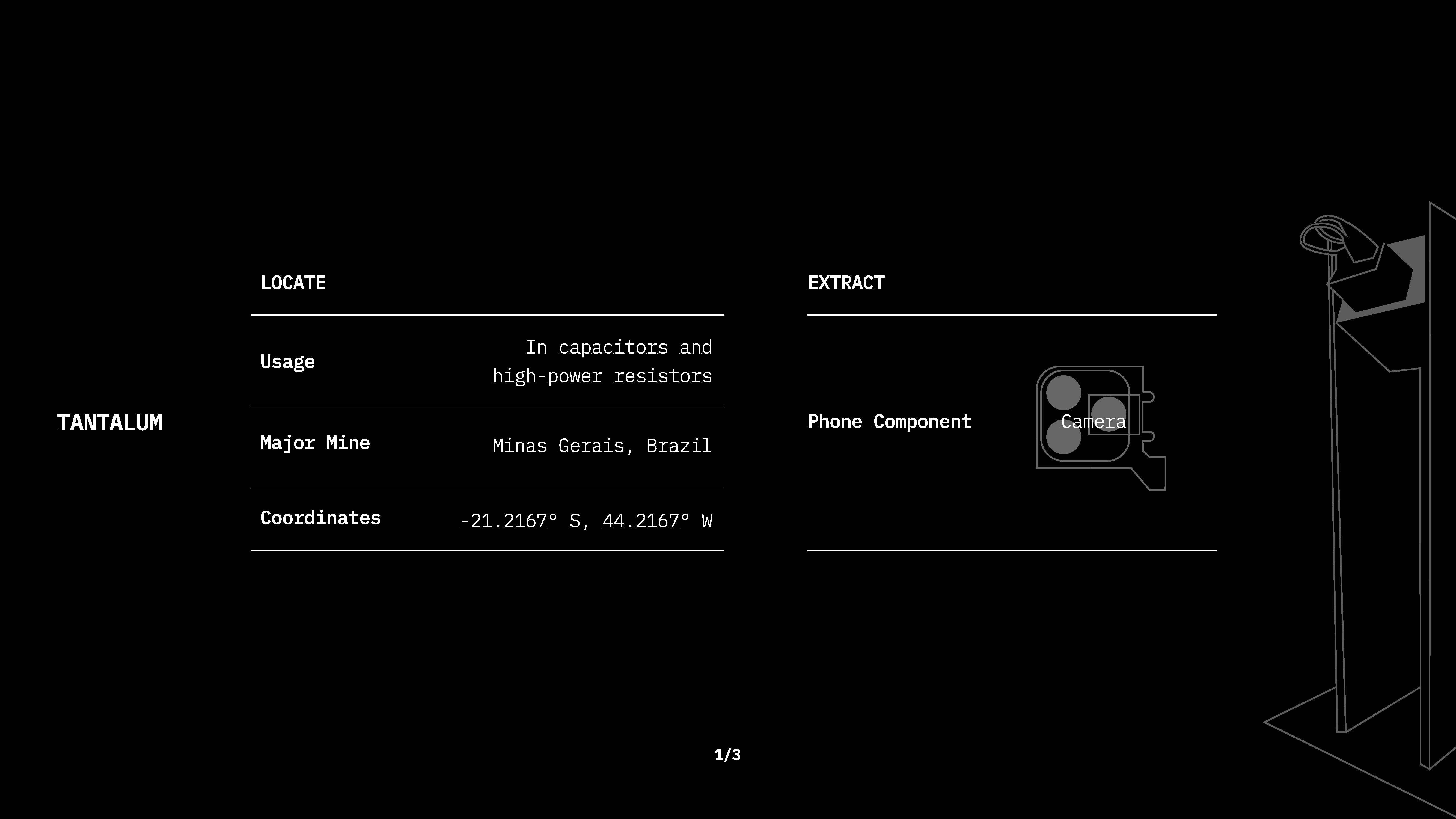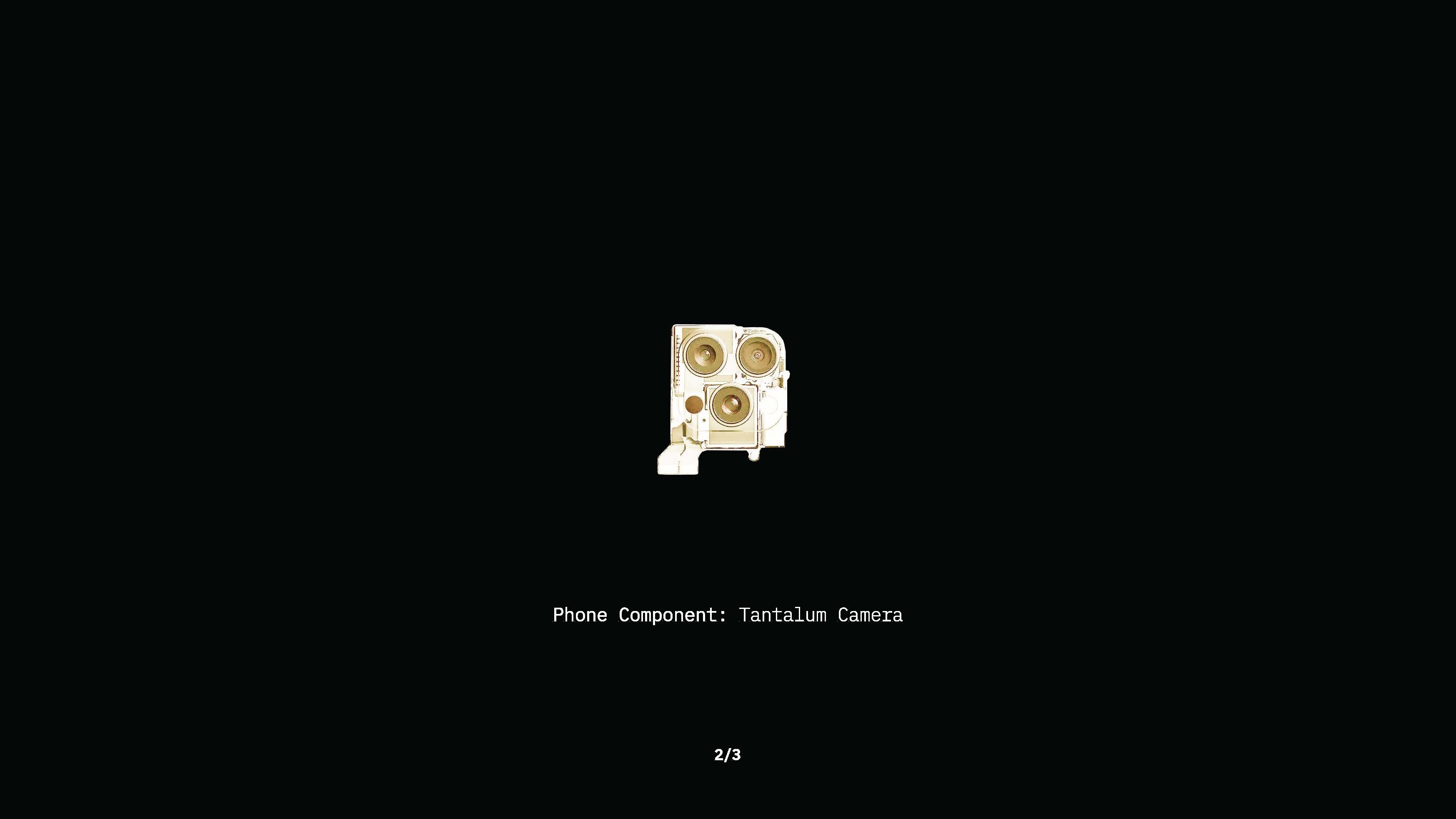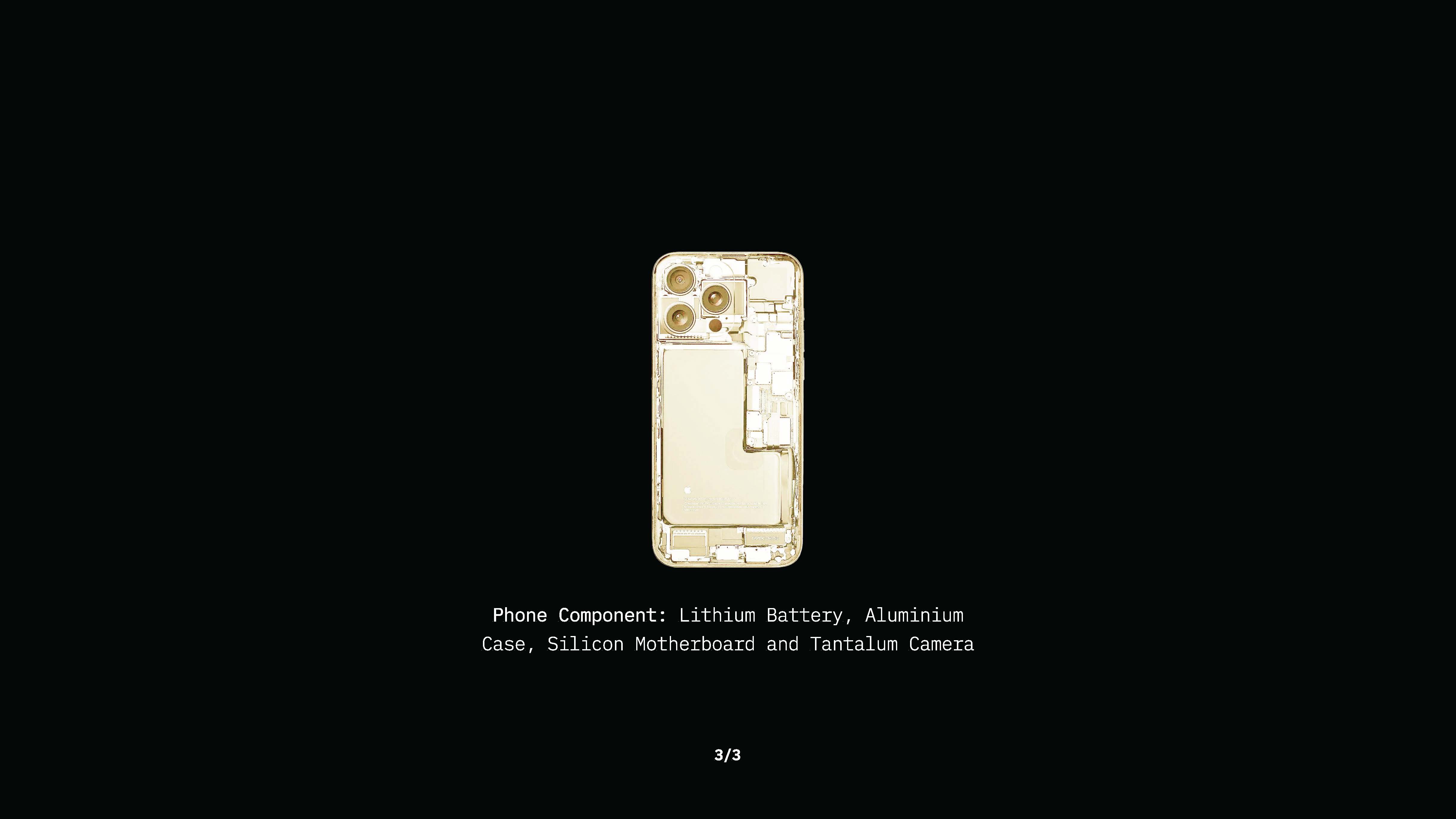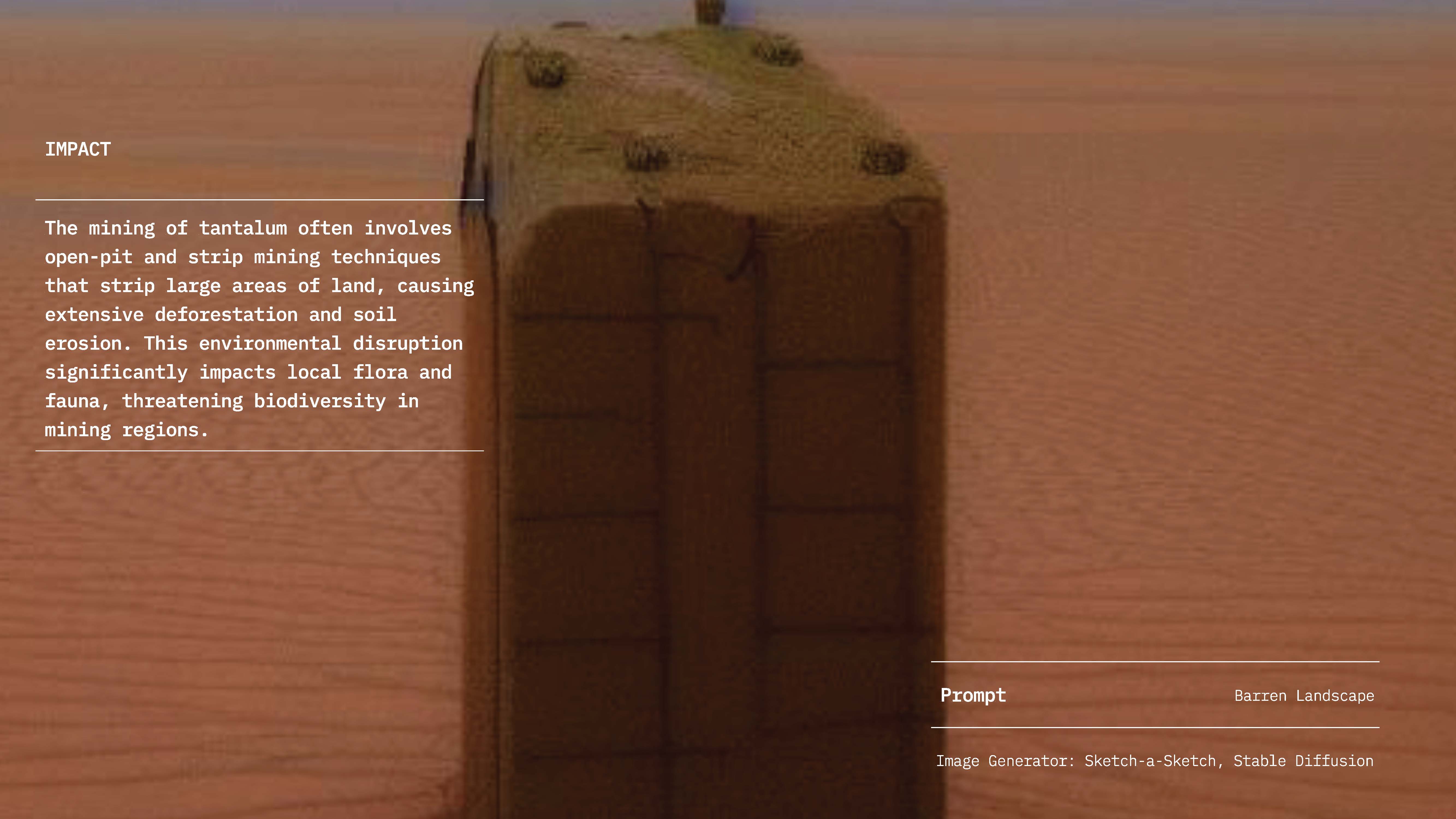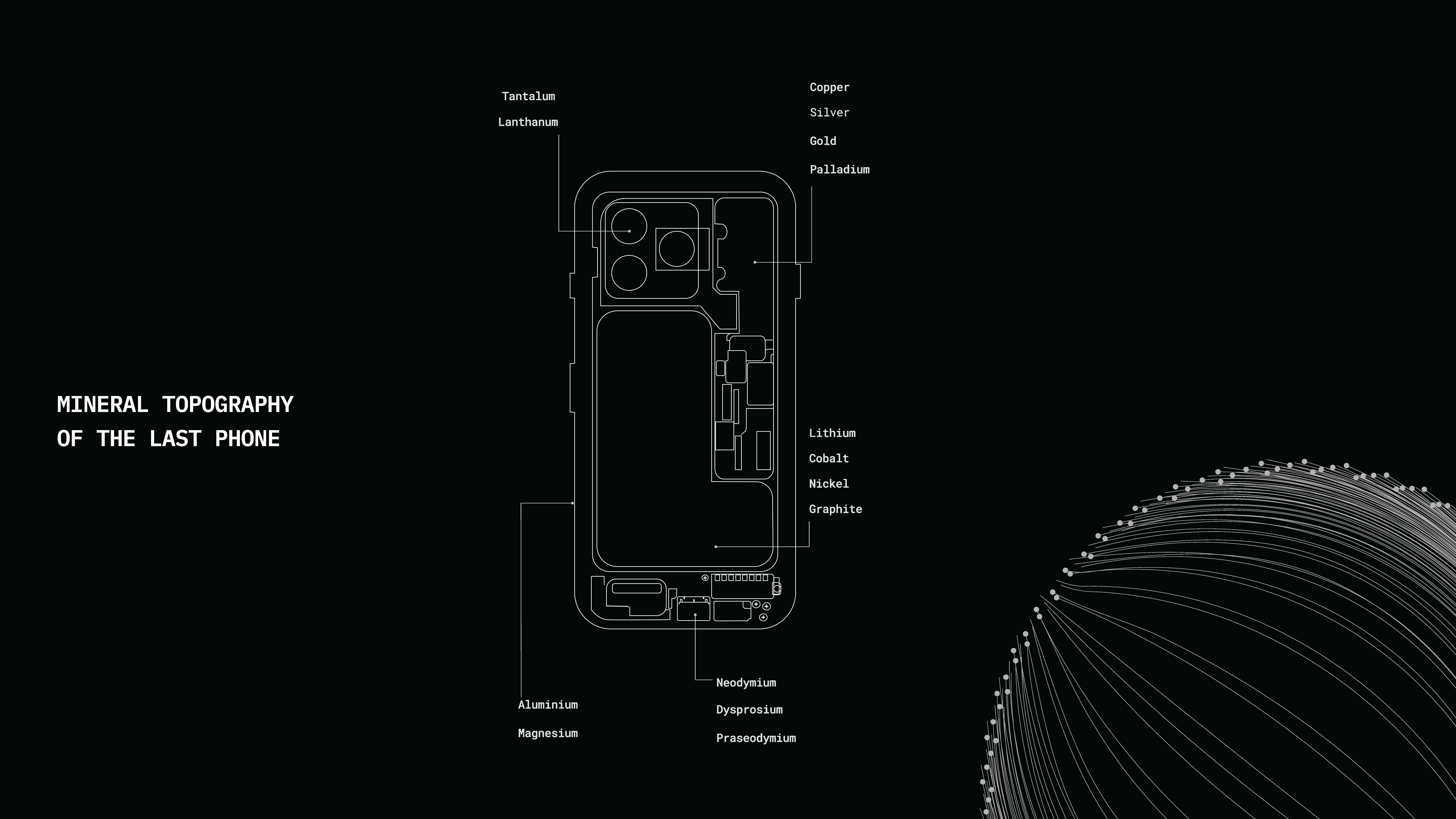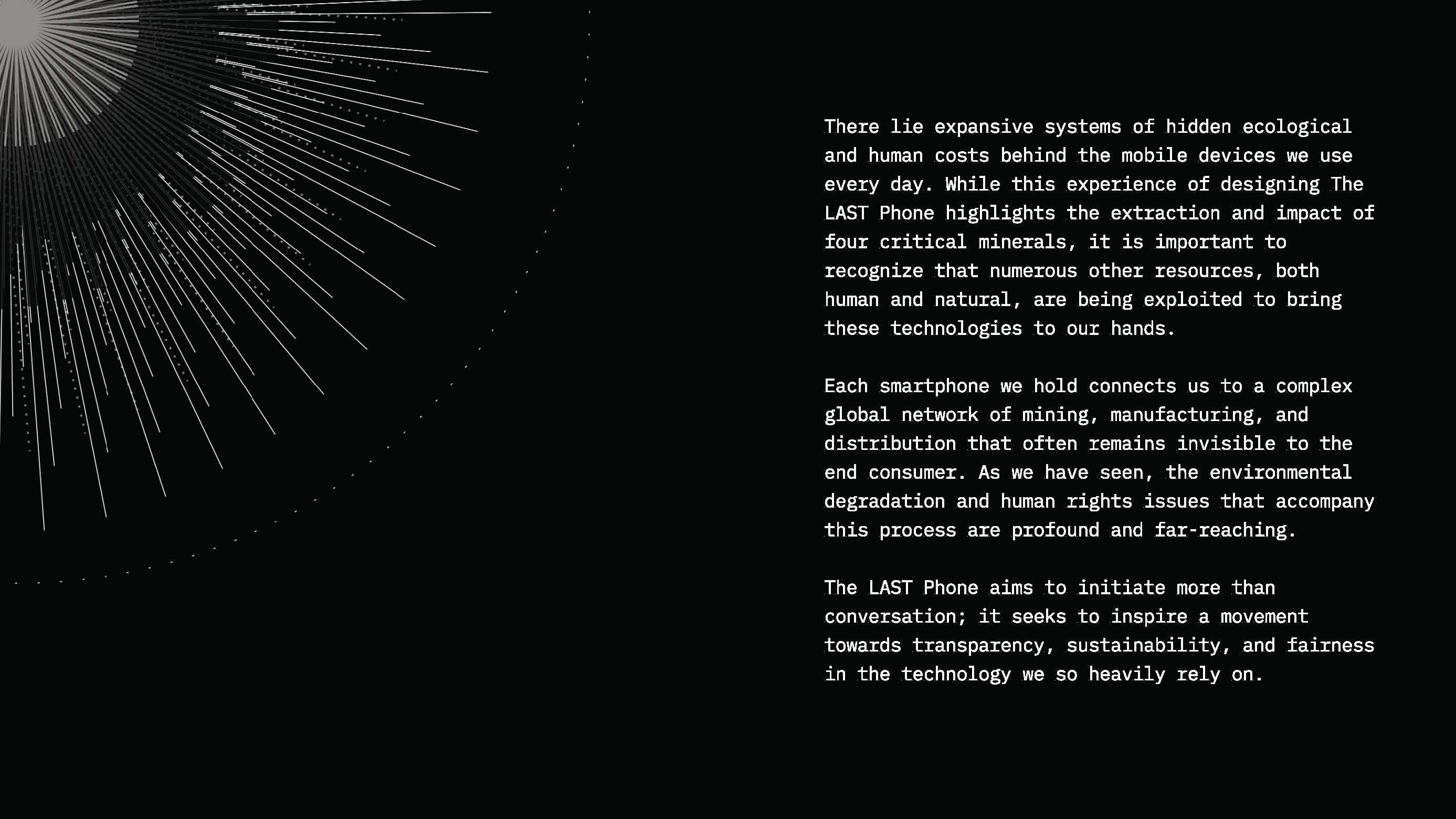The LAST Phone
Deeya Parikh, Eldar Gilmanov, Audrea Guo (2024)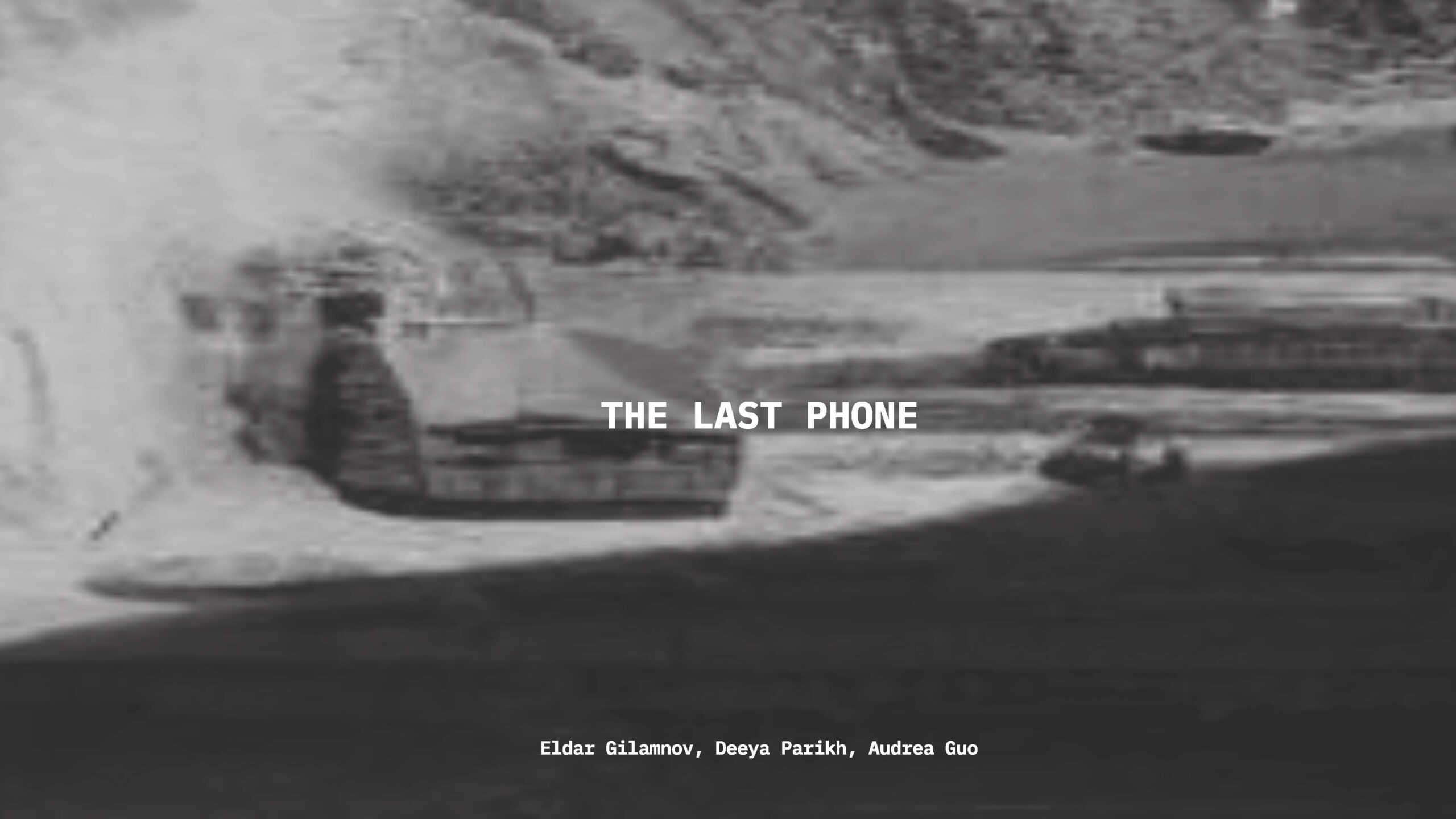
Expansive systems of hidden ecological and human costs lie behind the mobile devices we use every day. While this experience of designing The LAST Phone highlights the extraction and impact of four critical minerals, it is important to recognize that numerous other resources, both human and natural, are being exploited to bring these technologies to our hands. Each smartphone we hold connects us to a complex global network of mining, manufacturing, and distribution that often remains invisible to the end consumer.
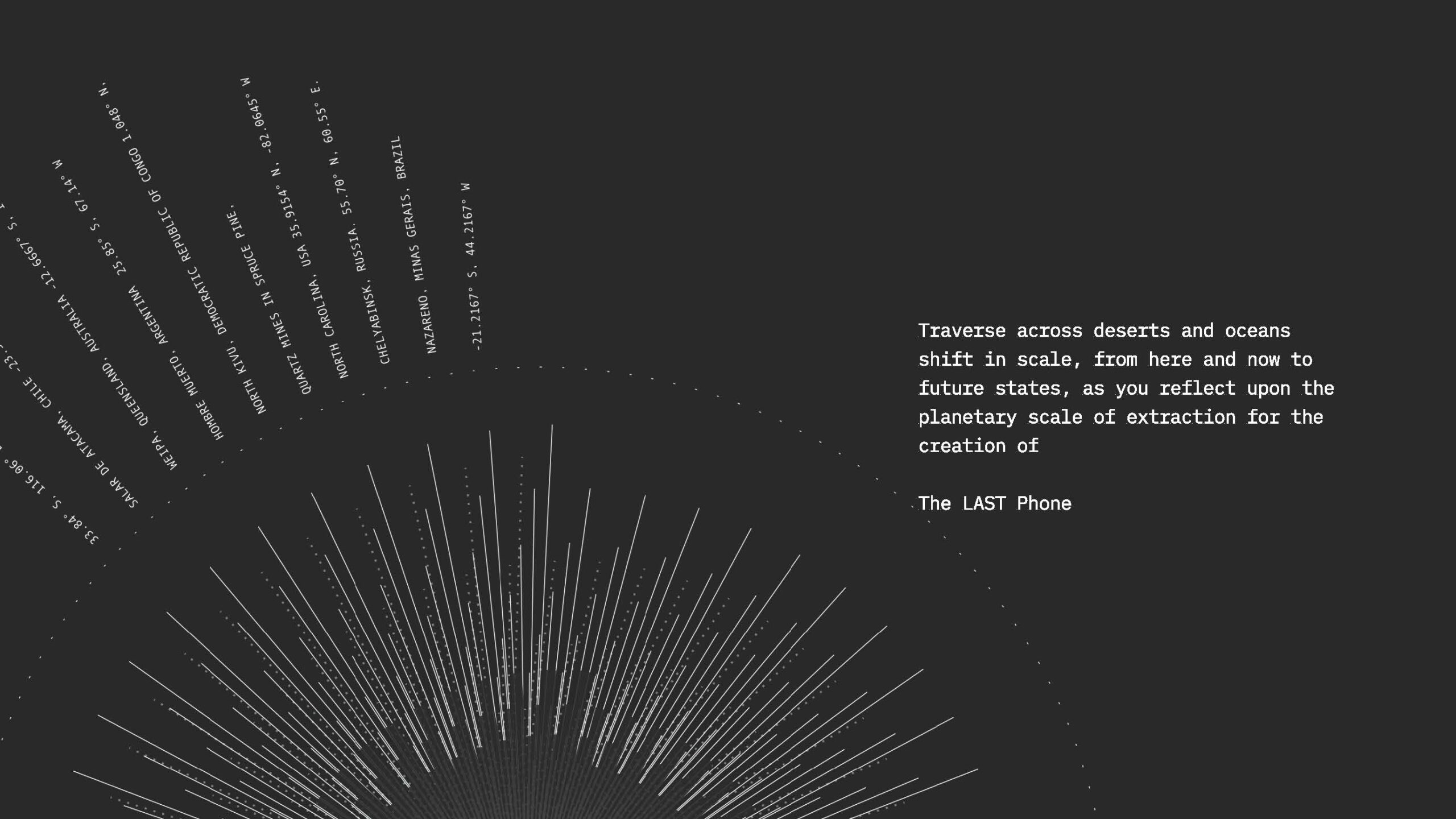
The environmental degradation and human rights abuses created by this process are profound and far-reaching. The LAST Phone aims to initiate more than conversation; it seeks to inspire a movement towards transparency, sustainability, and fairness in the technology we so heavily rely on. Through this project, we dove deeper into the conversation about AI’s role in design, particularly in Interaction Design. The LAST Phone reinforces our belief in AI as being a facilitator of creativity and innovation. AI/ML tools such as ChatGPT, Stable Diffusion, and Teachable Machine have not only allowed us to go beyond the limits of our imagination but has allowed us to conceive and prototype these ideas rapidly. With the option of implementing user feedback and iterating upon our processes with the assistance of AI tools, we could take our idea from an image recognition model, into a real-time interactive experience. Additionally, we have gained invaluable knowledge about the deep and nuanced systemic relationship between technology and the environment. Often technology in mainstream conversation is purported to be an intangible entity, something like a cloud floating in the ether, however, the process of creating The LAST Phone has elucidated the network of both tangible and intangible systems responsible for every tech interaction. Whether it be the minerals extracted in the mine fields of the Democratic Republic of Congo, or an Amazon assembly worker packaging a device to be shipped off to a home in the suburbs of Southern California, it is imperative for one to consider the intensive use of resources involved.
This project was made possible by the Frank-Ratchye Further Fund Microgrant #2024-073. Additional images can be found here.
